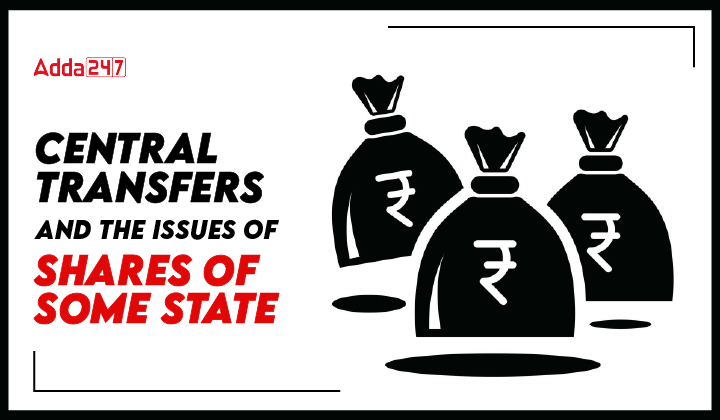Table of Contents
This article addresses a concern voiced by numerous states, especially those in Southern India, regarding the diminishing portion of funds allocated to them from the central government’s disbursements to the states, as observed from one Finance Commission to the next.
Relevance: GS paper 2
Overview
- Between the 12th and 15th Finance Commissions:
- Southern Indian states have witnessed a consistent drop in their share, from 19.785% to 15.800%.
- Comparing these Commissions, it’s observed that northern and eastern states have faced reductions. The states that benefited include those in hilly, central, and western regions, such as Maharashtra.
Overview of the Divisible Tax Pool
- Constitutional Framework: The distribution of net proceeds from taxes between the Central and State governments is outlined in Article 270 of the Indian Constitution.
- Tax Components: The divisible pool includes various taxes such as corporation tax, individual income tax, Central GST, and the Central portion of the Integrated Goods and Services Tax (IGST), among others.
- Role of the Finance Commission: As per Article 280(3)(a) of the Constitution, the Finance Commission, which is reconstituted every five years, is tasked with recommending how taxes, as well as grants-in-aid, should be divided among the States, following certain guidelines.
- 16th Finance Commission: This commission is made up of a chairperson and several members who are appointed by the President. Arvind Panagariya has been appointed to lead the 16th Finance Commission, which will serve from 2026 to 2031.
Key Criteria for Horizontal Devolution
- Income Distance: Reflects a state’s income relative to the state with the highest per capita income (Haryana), aiming to maintain equity among states.
- Population: Based on the 2011 Census, replacing the earlier 1971 Census for determining weightage.
- Forest and Ecology: Considers each state’s share of dense forest in the total forest cover.
- Demographic Performance: Rewards states for efforts in controlling population growth.
- Tax Effort: Rewards states with higher tax collection efficiency.
Different criterion
The distance criterion
- The distance criterion has been accorded the highest weight amongst the criteria by various Finance commissions. The eleventh finance commission had given this criterion a weight of 62.5%.
- ‘Income distance’ is the distance of a state’s income from the state with the highest per capita income which is Haryana. States with lower per capita income would be given a higher share to maintain equity among states
- The equalization principle has always been regarded in India and elsewhere as a key principle governing distribution. Economic and social justice demand this.
- The main reason for the loss of the southern states is the income distance criterion.
- Between the 12th & 15th FCs, the loss to the southern states due to the distance criterion amounted to 8.055% points, although the overall loss was much less at 3.985% points, implying that there was a gain under other criteria.
- Although on account of the distance criterion, low-income states such as Bihar and Uttar Pradesh have gained over time, they have lost on account of other criteria.
Population Factor
- The population criterion has sparked some debate.
- Data from the 1971 census was used up until the fourteenth Finance Commission, shifting to the 2011 data for the 15th Commission.
- The introduction of the demographic change criterion aimed to adjust for states that had effectively reduced their fertility rates, although this change had a negligible overall impact. For Tamil Nadu, this adjustment was slightly beneficial.
Future Actions
- There’s a debate on whether the importance of the income distance criterion should be diminished, questioning its indefinite applicability.
- The 16th Finance Commission could consider lowering its significance while increasing the emphasis on other criteria.
- Another concern is the total amount available for division among states.
- Despite the 14th FC’s suggestion to increase all states’ share from 32% to 42%, the central government’s increase in cesses and surcharges reduced the divisible pool, which is counterproductive.
Prospective Directions
- Setting a cap on cesses and surcharges at 10% of the central government’s total tax revenue could be a solution.
- Following the 14th FC’s recommendations, states’ share in total revenue receipts rose from 63.9% to 68.1%, further increasing to 70.7% in 2020-2021, before dropping to 67.5% in 2022-2023.
- The primary issue has been the heavy reliance on the income distance criterion, which currently holds a 45% weight. While this criterion is essential for fair distribution, its importance could be reduced by 5% to 10% points.
- Additionally, the 16th Finance Commission might consider setting an upper limit on cesses and surcharges.
Conclusion
Tackling the challenges related to the distribution of financial resources demands a cooperative effort from both the Central and State governments, with an emphasis on fair distribution and the principles of fiscal federalism. Changes in the way revenue is shared, coupled with increased involvement of states in key decision-making entities such as the Finance Commission, are crucial for ensuring equitable development and the allocation of resources throughout the nation.



 TSPSC Group 1 Question Paper 2024, Downl...
TSPSC Group 1 Question Paper 2024, Downl...
 TSPSC Group 1 Answer key 2024 Out, Downl...
TSPSC Group 1 Answer key 2024 Out, Downl...
 UPSC Prelims 2024 Question Paper, Downlo...
UPSC Prelims 2024 Question Paper, Downlo...





